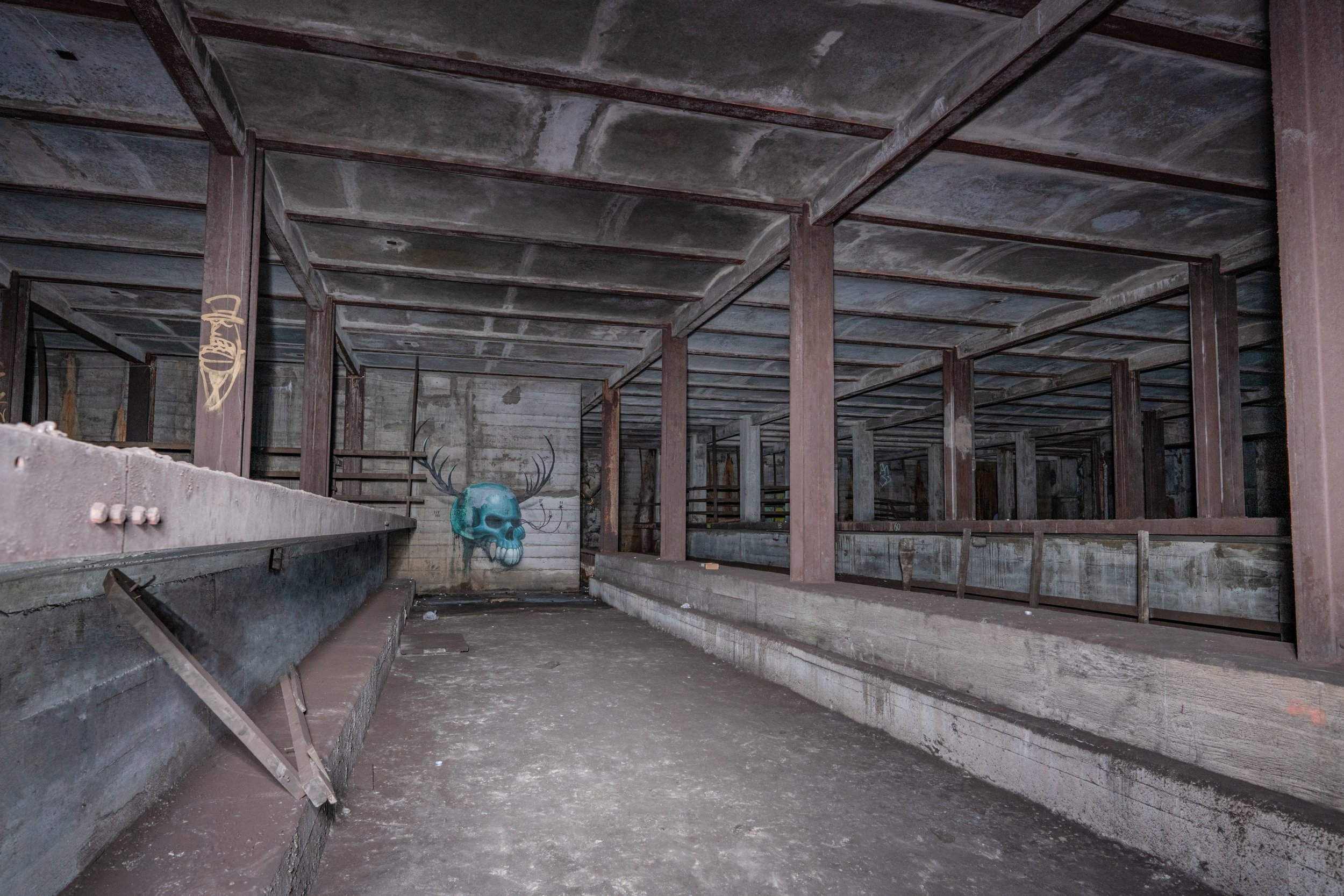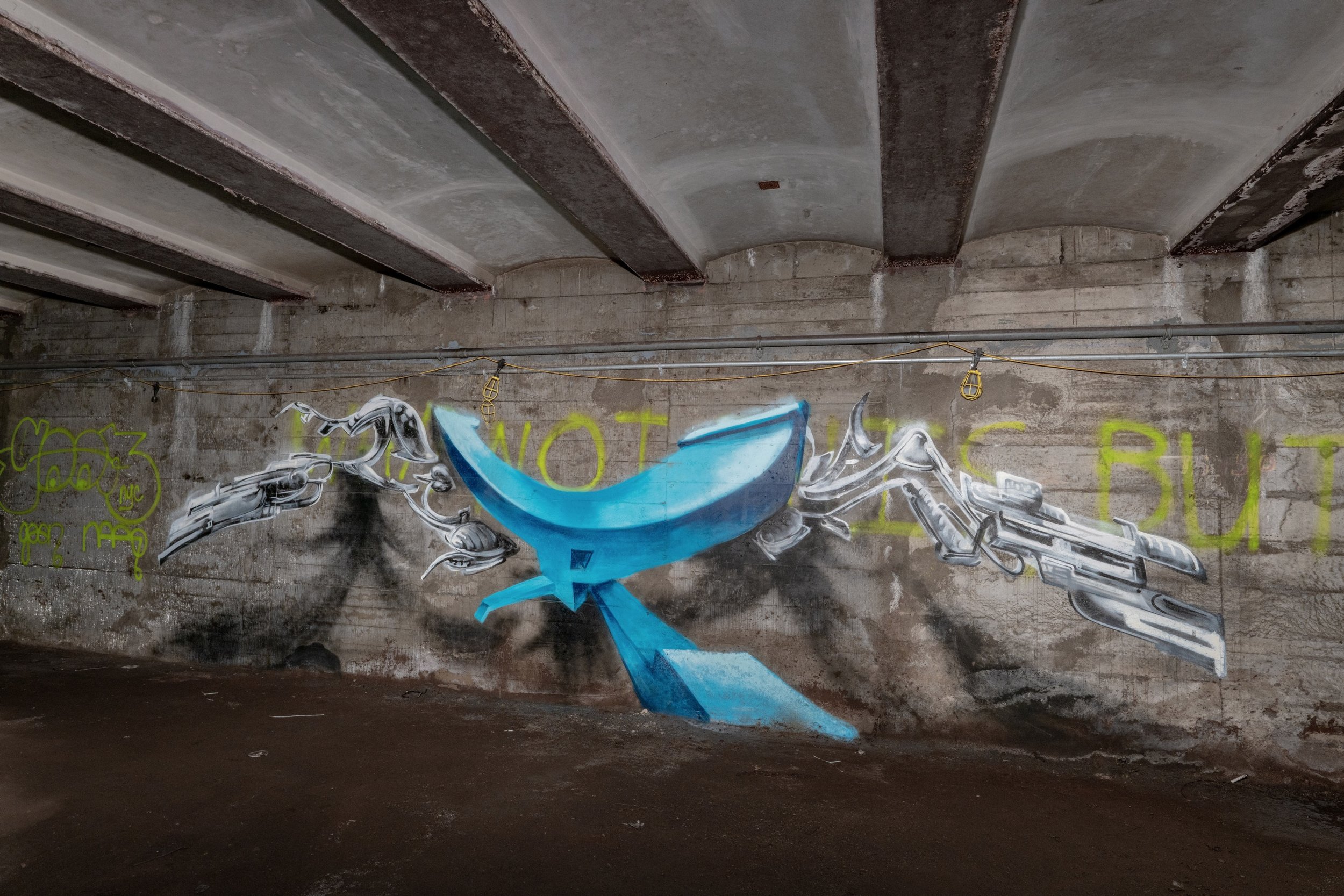This tunnel is one that feels special to me, and it may be very hard to justify. It’s dirty (very, very dirty), pitch black, sealed up tight, hot, and stuffy. It’s long abandoned, having been sealed up in the 70s. The station that it stems from is infested by the homeless and always smells strange, if it doesn’t smell like urine. It also can get very crowded, being one of the only stations to serve the LES.
Why is it even worth bothering with, then? What makes it special in the grand scheme of things, and what makes it special to me personally? At a glance the station in front of the tunnel appears overbuilt, with high ceilings, island platforms, 4 tracks, only two tracks being utilized. However, there is more to the story.
To start off, exploring this place is not as straightforward as it seems. What seems like a simple two track tunnel is actually an enormous space, filled with several more trackways, lots of empty space, and many small rooms and side areas. At the end, on what would have been/was the Manhattan bound/Northbound track, there is even a (somehow) working signal, left over from the tunnel’s days of being active tail tracks. The two tail tracks are still down, though the third rail is disconnected from power and the tracks are covered in a layer of “brown snow”, or tunnel dust. The station before the tunnel was built with unusually high ceilings as a provision for the Second Avenue Subway, another relic of the Second System plans which has, contrary to the trend, actually come partially into existence.
While there is evidently some neat stuff to see here, the tunnel was supposed to serve a much more important purpose than satisfying the eyes of the few. It would have connected completely new lines in Brooklyn (including the S 4th St line/hub aka Underbelly—the topic of the last post—and the Utica Av line which is still discussed to this day) directly to the 6th Av line in Manhattan. Trains would have run through a new crossriver tunnel spanning from the Lower East Side to Williamsburg. This tunnel would have not only been beneficial to Brooklyn commuters for the past 80 years, but it also would have created a great alternative route to the L line between Manhattan and Brooklyn, helping to avert the problems with the L that have arisen over the past 15 years, from overcrowding to the shutdown problem.
Unfortunately, this tunnel lays dormant as just another relic of the IND Second System plans, destined from the start to be abandoned due to a lack of funds. However, for many years it was used in active service, the tail tracks used for train storage and relays, as the 6th Av line either ended here or continued through the Rutgers St Tubes into Brooklyn to merge with the Crosstown Line. 6th Av express trains, along with select local trains and more during service changes, used to terminate at this station and hence made use of the center tracks in the station and the tail tracks. The Chrystie St connection greatly changed service patterns throughout the system, most notably creating a new route for 6th Av express trains to connect through to Brooklyn’s BMT 4th Av and Brighton Lines, and a route for 6th Av local trains to connect to Brooklyn’s and Queens’s BMT Jamaica Line. As a result, the center tracks were taken out of active service and the tail tracks were abandoned following the completion of the Chrystie St connection. When the homeless began to inhabit the tail tracks during their abandoned time in the 70s, walls were built around the perimeter of the tunnel, blocking it off from easy access.
View of the end of the tail tracks, including the still-lit signal, bumpers, old tracks, candles, and a friend.
My thumb didn’t feel too good after lighting around 50 candles (luckily I had some help, as we used 100), so I hope you guys enjoy the photos!





















